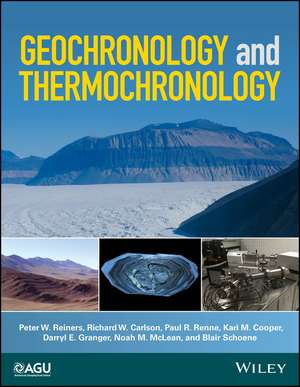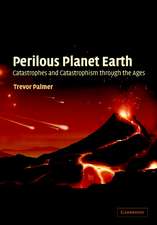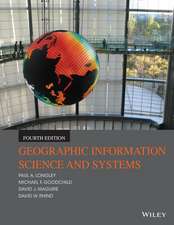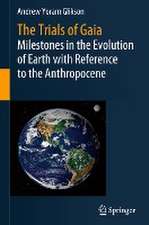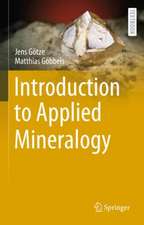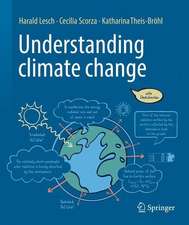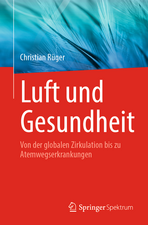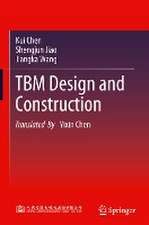Geochronology and Thermochronology: Wiley Works
Autor PW Reinersen Limba Engleză Paperback – 15 mar 2018
| Toate formatele și edițiile | Preț | Express |
|---|---|---|
| Paperback (1) | 680.13 lei 6-8 săpt. | |
| Wiley – 15 mar 2018 | 680.13 lei 6-8 săpt. | |
| Hardback (1) | 994.43 lei 6-8 săpt. | |
| Wiley – 15 mar 2018 | 994.43 lei 6-8 săpt. |
Preț: 680.13 lei
Preț vechi: 883.28 lei
-23% Nou
Puncte Express: 1020
Preț estimativ în valută:
130.18€ • 141.46$ • 109.43£
130.18€ • 141.46$ • 109.43£
Carte tipărită la comandă
Livrare economică 21 aprilie-05 mai
Preluare comenzi: 021 569.72.76
Specificații
ISBN-13: 9781118455784
ISBN-10: 1118455789
Pagini: 480
Dimensiuni: 215 x 275 x 24 mm
Greutate: 1.23 kg
Editura: Wiley
Seria Wiley Works
Locul publicării:Hoboken, United States
ISBN-10: 1118455789
Pagini: 480
Dimensiuni: 215 x 275 x 24 mm
Greutate: 1.23 kg
Editura: Wiley
Seria Wiley Works
Locul publicării:Hoboken, United States
Notă biografică
Peter W. Reiners, University of Arizona, USA Richard W. Carlson, Carnegie Institution for Science, USA Paul R. Renne, Berkeley Geochronology Center and University of California, USA Kari M. Cooper, University of California, USA Darryl E. Granger, Purdue University, USA Noah M. McLean, University of Kansas, USA Blair Schoene, Princeton University, USA
Cuprins
Preface, ix 1 Introduction, 1 1.1 Geo and chronologies, 1 1.2 The ages of the age of the earth, 2 1.3 Radioactivity, 7 1.4 The objectives and significance of geochronology, 13 1.5 References, 15 2 Foundations of radioisotopic dating, 17 2.1 Introduction, 17 2.2 The delineation of nuclear structure, 17 2.3 Nuclear stability, 19 2.3.1 Nuclear binding energy and the mass defect, 19 2.3.2 The liquid drop model for the nucleus, 20 2.3.3 The nuclear shell model, 22 2.3.4 Chart of the nuclides, 23 2.4 Radioactive decay, 23 2.4.1 Fission, 23 2.4.2 Alpha-decay, 24 2.4.3 Beta-decay, 25 2.4.4 Electron capture, 25 2.4.5 Branching decay, 25 2.4.6 The energy of decay, 25 2.4.7 The equations of radioactive decay, 27 2.5 Nucleosynthesis and element abundances in the solar system, 30 2.5.1 Stellar nucleosynthesis, 30 2.5.2 Making elements heavier than iron: s-, r-, p-process nucleosynthesis, 31 2.5.3 Element abundances in the solar system, 32 2.6 Origin of radioactive isotopes, 33 2.6.1 Stellar contributions of naturally occurring radioactive isotopes, 33 2.6.2 Decay chains, 33 2.6.3 Cosmogenic nuclides, 33 2.6.4 Nucleogenic isotopes, 35 2.6.5 Man-made radioactive isotopes, 36 2.7 Conclusions, 36 2.8 References, 36 3 Analytical methods, 39 3.1 Introduction, 39 3.2 Sample preparation, 39 3.3 Extraction of the element to be analyzed, 40 3.4 Isotope dilution elemental quantification, 42 3.5 Ion exchange chromatography, 43 3.6 Mass spectrometry, 44 3.6.1 Ionization, 46 3.6.2 Extraction and focusing of ions, 49 3.6.3 Mass fractionation, 50 3.6.4 Mass analyzer, 52 3.6.5 Detectors, 57 3.6.6 Vacuum systems, 60 3.7 Conclusions, 62 3.8 References, 63 4 Interpretational approaches: making sense of data, 65 4.1 Introduction, 65 4.2 Terminology and basics, 65 4.2.1 Accuracy, precision, and trueness, 65 4.2.2 Random versus systematic, uncertainties versus errors, 66 4.2.3 Probability density functions, 67 4.2.4 Univariate (one-variable) distributions, 68 4.2.5 Multivariate normal distributions, 68 4.3 Estimating a mean and its uncertainty, 69 4.3.1 Average values: the sample mean, sample variance, and sample standard deviation, 70 4.3.2 Average values: the standard error of the mean, 70 4.3.3 Application: accurate standard errors for mass spectrometry, 71 4.3.4 Correlation, covariance, and the covariance matrix, 73 4.3.5 Degrees of freedom, part 1: the variance, 73 4.3.6 Degrees of freedom, part 2: Student's t distribution, 73 4.3.7 The weighted mean, 75 4.4 Regressing a line, 76 4.4.1 Ordinary least-squares linear regression, 76 4.4.2 Weighted least-squares regression, 77 4.4.3 Linear regression with uncertainties in two or more variables (York regression), 77 4.5 Interpreting measured data using the mean square weighted deviation, 79 4.5.1 Testing a weighted mean's assumptions using its MSWD, 79 4.5.2 Testing a linear regression's assumptions using its MSWD, 80 4.5.3 My data set has a high MSWD--what now?, 81 4.5.4 My data set has a really low MSWD--what now?, 81 4.6 Conclusions, 82 4.7 Bibliography and suggested readings, 82 5 Diffusion and thermochronologic interpretations, 83 5.1 Fundamentals of heat and chemical diffusion, 83 5.1.1 Thermochronologic context, 83 5.1.2 Heat and chemical diffusion equation, 83 5.1.3 Temperature dependence of diffusion, 85 5.1.4 Some analytical solutions, 86 5.1.5 Anisotropic diffusion, 86 5.1.6 Initial infinite concentration (spike), 86 5.1.7 Characteristic length and time scales, 86 5.1.8 Semi-infinite media, 87 5.1.9 Plane sheet, cylinder, and sphere, 88 5.2 Fractional loss, 88 5.3 Analytical methods for measuring diffusion, 89 5.3.1 Step-heating fractional loss experiments, 89 5.3.2 Multidomain diffusion, 92 5.3.3 Profile characterization, 93 5.4 Interpreting thermal histories from thermochronologic data, 94 5.4.1 "End-members" of thermochronometric date interpretations, 94 5.4.2 Equilibrium dates, 95 5.4.3 Partial retention zone, 95 5.4.4 Resetting dates, 96 5.4.5 Closure, 97 5.5 From thermal to geologic histories in low-temperature thermochronology: diffusion and advection of heat in the earth's crust, 105 5.5.1 Simple solutions for one- and two-dimensional crustal thermal fields, 107 5.5.2 Erosional exhumation, 108 5.5.3 Interpreting spatial patterns of erosion rates, 109 5.5.4 Interpreting temporal patterns of erosion rates, 113 5.5.5 Interpreting paleotopography, 113 5.6 Detrital thermochronology approaches for understanding landscape evolution and tectonics, 116 5.7 Conclusions, 121 5.8 References, 123 6 Rb-Sr, Sm-Nd, and Lu-Hf, 127 6.1 Introduction, 127 6.2 History, 127 6.3 Theory, fundamentals, and systematics, 128 6.3.1 Decay modes and isotopic abundances, 128 6.3.2 Decay constants, 128 6.3.3 Data representation, 129 6.3.4 Geochemistry, 131 6.4 Isochron systematics, 133 6.4.1 Distinguishing mixing lines from isochrons, 136 6.5 Diverse chronological applications, 137 6.5.1 Dating diagenetic minerals in clay-rich sediments, 137 6.5.2 Direct dating of ore minerals, 138 6.5.3 Dating of mineral growth in magma chambers, 140 6.5.4 Garnet Sm-Nd and Lu-Hf dating, 141 6.6 Model ages, 143 6.6.1 Model ages for volatile depletion, 144 6.6.2 Model ages for multistage source evolution, 146 6.7 Conclusion and future directions, 148 6.8 References, 148 7 Re-Os and Pt-Os, 151 7.1 Introduction, 151 7.2 Radioactive systematics and basic equations, 151 7.3 Geochemical properties and abundance in natural materials, 154 7.4 Analytical challenges, 154 7.5 Geochronologic applications, 156 7.5.1 Meteorites, 156 7.5.2 Molybdenite, 158 7.5.3 Other sulfides, ores, and diamonds, 159 7.5.4 Organic-rich sediments, 161 7.5.5 Komatiites, 161 7.5.6 Basalts, 163 7.5.7 Dating melt extraction from the mantle--Re-Os model ages, 164 7.6 Conclusions, 167 7.7 References, 167 8 U-Th-Pb geochronology and thermochronology, 171 8.1 Introduction and background, 171 8.1.1 Decay of U and Th to Pb, 171 8.1.2 Dating equations, 173 8.1.3 Decay constants, 173 8.1.4 Isotopic composition of U, 174 8.2 Chemistry of U, Th, and Pb, 176 8.3 Data visualization, isochrons, and concordia plots, 176 8.3.1 Isochron diagrams, 176 8.3.2 Concordia diagrams, 177 8.4 Causes of discordance in the U-Th-Pb system, 178 8.4.1 Mixing of different age domains, 180 8.4.2 Pb loss, 180 8.4.3 Intermediate daughter product disequilibrium, 182 8.4.4 Correction for initial Pb, 183 8.5 Analytical approaches to U-Th-Pb geochronology, 184 8.5.1 Thermal ionization mass spectrometry, 185 8.5.2 Secondary ion mass spectrometry, 187 8.5.3 Laser ablation inductively coupled plasma mass spectrometry, 188 8.5.4 Elemental U-Th-Pb geochronology by EMP, 188 8.6 Applications and approaches, 188 8.6.1 The age of meteorites and of Earth, 188 8.6.2 The Hadean, 192 8.6.3 P-T-t paths of metamorphic belts, 194 8.6.4 Rates of crustal magmatism from U-Pb geochronology, 197 8.6.5 U-Pb geochronology and the stratigraphic record, 200 8.6.6 Detrital zircon geochronology, 202 8.6.7 U-Pb thermochronology, 204 8.6.8 Carbonate geochronology by the U-Pb method, 209 8.6.9 U-Pb geochronology of baddeleyite and paleogeographic reconstructions, 211 8.7 Concluding remarks, 212 8.8 References, 212 9 The K-Ar and 40Ar/39Ar systems, 231 9.1 Introduction and fundamentals, 231 9.2 Historical perspective, 232 9.3 K-Ar dating, 233 9.3.1 Determining 40Ar*, 233 9.3.2 Determining 40K, 234 9.4 40Ar/39Ar dating, 234 9.4.1 Neutron activation, 234 9.4.2 Collateral effects of neutron irradiation, 237 9.4.3 Appropriate materials, 240 9.5 Experimental approaches and geochronologic applications, 242 9.5.1 Single crystal fusion, 242 9.5.2 Intragrain age gradients, 243 9.5.3 Incremental heating, 243 9.6 Calibration and accuracy, 248 9.6.1 40K decay constants, 248 9.6.2 Standards, 249 9.6.3 So which is the best calibration?, 250 9.6.4 Interlaboratory issues, 252 9.7 Concluding remarks, 252 9.7.1 Remaining challenges, 252 9.8 References, 253 10 Radiation-damage methods of geochronology and thermochronology, 259 10.1 Introduction, 259 10.2 Thermal and optically stimulated luminescence, 259 10.2.1 Theory, fundamentals, and systematics, 259 10.2.2 Analysis, 260 10.2.3 Fundamental assumptions and considerations for interpretations, 264 10.2.4 Applications, 265 10.3 Electron spin resonance, 266 10.3.1 Theory, fundamentals, and systematics, 266 10.3.2 Analysis, 267 10.3.3 Fundamental assumptions and considerations for interpretations, 268 10.3.4 Applications, 269 10.4 Alpha decay, alpha-particle haloes, and alpha-recoil tracks, 270 10.4.1 Theory, fundamentals, and systematics, 270 10.5 Fission tracks, 273 10.5.1 History, 273 10.5.2 Theory, fundamentals, and systematics, 273 10.5.3 Analyses, 274 10.5.4 Fission-track age equations, 276 10.5.5 Fission-track annealing, 278 10.5.6 Track-length analysis, 280 10.5.7 Applications, 281 10.6 Conclusions, 284 10.7 References, 285 11 The (U-Th)/He system, 291 11.1 Introduction, 291 11.2 History, 291 11.3 Theory, fundamentals, and systematics, 292 11.4 Analysis, 294 11.4.1 "Conventional" analyses, 294 11.4.2 Other analytical approaches, 306 11.4.3 Uncertainty and reproducibility in (U-Th)/He dating, 307 11.5 Helium diffusion, 310 11.5.1 Introduction, 310 11.5.2 Apatite, 311 11.5.3 Zircon, 322 11.5.4 Other minerals, 332 11.5.5 A compilation of He diffusion kinetics, 334 11.6 4He/3He thermochronometry, 342 11.6.1 Method requirements and assumptions, 346 11.7 Applications and case studies, 348 11.7.1 Tectonic exhumation of normal fault footwalls, 348 11.7.2 Paleotopography, 349 11.7.3 Orogen-scale trends in thermochronologic dates, 350 11.7.4 Detrital double-dating and sediment provenance, 353 11.7.5 Volcanic double-dating, precise eruption dates, and magmatic residence times, 353 11.7.6 Radiation-damage-and-annealing model applied to apatite, 355 11.8 Conclusions, 355 11.9 References, 356 12 Uranium-series geochronology, 365 12.1 Introduction, 365 12.2 Theory and fundamentals, 367 12.2.1 The mathematics of decay chains, 367 12.2.2 Mechanisms of producing disequilibrium, 369 12.3 Methods and analytical techniques, 369 12.3.1 Analytical techniques, 369 12.4 Applications, 372 12.4.1 U-series dating of carbonates, 372 12.4.2 U-series dating in silicate rocks, 378 12.5 Summary, 389 12.6 References, 390 13 Cosmogenic nuclides, 395 13.1 Introduction, 395 13.2 History, 395 13.3 Theory, fundamentals, and systematics, 396 13.3.1 Cosmic rays, 396 13.3.2 Distribution of cosmic rays on Earth, 396 13.3.3 What makes a cosmogenic nuclide detectable and useful?, 397 13.3.4 Types of cosmic-ray reactions, 398 13.3.5 Cosmic-ray attenuation, 399 13.3.6 Calibrating cosmogenic nuclide-production rates in rocks, 400 13.4 Applications, 401 13.4.1 Types of cosmogenic nuclide applications, 401 13.4.2 Extraterrestrial cosmogenic nuclides, 401 13.4.3 Meteoric cosmogenic nuclides, 402 13.5 Conclusion, 415 13.6 References, 416 14 Extinct radionuclide chronology, 421 14.1 Introduction, 421 14.2 History, 422 14.3 Systematics and applications, 423 14.3.1 26Al-26Mg, 423 14.3.2 53Mn-53Cr chronometry, 425 14.3.3 107Pd-107Ag, 428 14.3.4 182Hf-182W, 430 14.3.5 I-Pu-Xe, 433 14.3.6 146Sm-142Nd, 436 14.4 Conclusions, 441 14.5 References, 441 Index, 445
